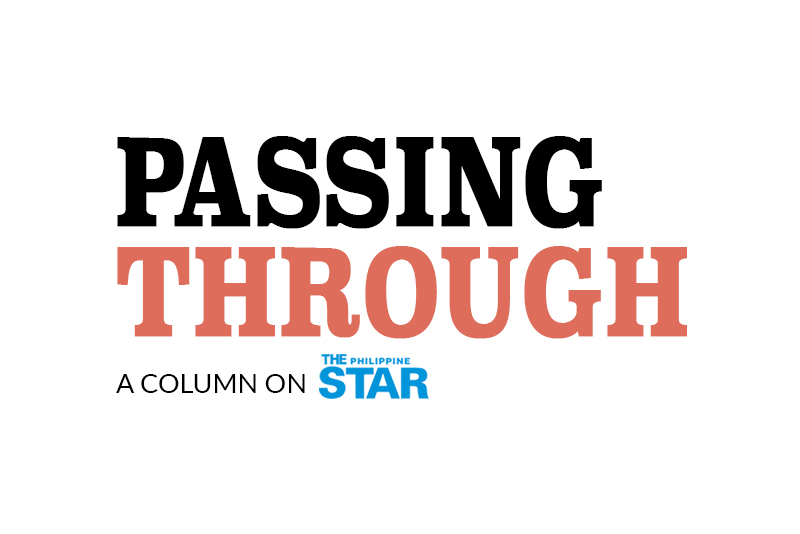by Peachy Vibal-Guioguio
media.Xchange President & The Philippine Star Columnist
It was about a year ago and almost to the day that we went on an ocean cruise around the Baltic Sea with sightseeing visits to about seven cities along the route on what was almost a two-week sojourn. Now that travel experience seems to belong to another dimension of reality, to another life as it were, as COVID 19 has impacted all countries around the world from the sea coasts of Samoa to the highlands of Nepal — making travel all but impossible in the way that we are accustomed to just six months ago.
Today, in place of transoceanic voyages, we have what has been dubbed in the press as travel to nowhere as in the case of Nadzri Harif of Brunei who boarded a Brunei Royal Brunei last August, went through all the safety checks at the airport, boarded the plane for an 85-minute flight and landed at the same terminal from whence he left. Mr. Harif is one of the thousands of people in Brunei, Taiwan, Japan and Australia who have started booking flights that start and end in the same place. Some airlines call these “scenic flights;” others are more direct, calling them “flights to nowhere,” and people are actually buying. For example, Qantas announced a flight to nowhere over Australia. That flight sold out in 10 minutes.
So it is with deep nostalgia that I recall that Norwegian Cruise Line experience that we had. And because of this pandemic, it would be hard to duplicate this given the quarantine rules and health regulations that each country and therefore, every port on a cruise destination has put in place to prevent the spread of the virus to their own people. I look back at those memorable times, which seems eons ago, on that ship as we take on the sights, the food and the new friendships.
Ocean cruises, centuries ago were afforded only by the very rich. Today, it has become a multi-billion-dollar business creating broader market which they made affordable as cruise companies vie for patronage by offering special deals and price reductions. This results in a typical passenger list representing a cross section of the world’s population — from various occupation and economic groups, from different cultures and ethnic origins; literally from all points of the compass. Given today’s mammoth ships with on-board capacity of between 5,000 – 7,000 persons, one fully loaded ship would itself constitute a virtual township, a mini-city of people in a confined proximity for more than a week or so.
Putting all this together and coming up with no less than happy results is the science and art of cruise management. You need a system and well-tried procedures to make it work and above all, you need to have the right people to apply all of that in situations when you have to deal with thousands of cruisers all looking forward to a good time. That cruise for us has achieved all this for the most part and credit goes to its crew, majority of whom were from Filipinos. Regardless of their ethnicity though, the ship personnel showed professionalism and due diligence which could be attributed to the high level of training that they have had and the corporate culture that the company has established from the highest officers to the lowest ranker on the ship. There are hiccups on the service and glitches now and then but overall, the cruise was memorable and the experience overall was one of satisfaction and delight.
Now those were the good old days. The news today coming from the travel front has been quite bleak and the tourism industry has really become one of the most severely affected by this on-going pandemic. For example, in August, an asymptomatic passenger tested positive aboard the French-owned Paul Gauguin cruise ship while sailing on the line’s first cruise with international guests. The company immediately suspended the sailing and enforced quarantine and testing for onboard guests and crew; all passengers were then debarked to enter a seven-day quarantine period. Then there is the case of the U.S owned UnCruise Adventures cruise to Alaska for the first-time last month when an asymptomatic passenger tested positive. Passengers aboard were quarantined first onboard (the positive passenger did so in a special quarantine-specific cabin) and then, within a day, at a hotel in Juneau, before being cleared with negative tests to return home—all in accordance with the company’s approved COVID-19 contingency plan. Still, the line canceled the remainder of its sailing season.
But here’s a bit of happy news. Travel-hungry European cruise-ship fans, who would normally be traveling around the world this time of year, but have had their own expeditions canceled due to the coronavirus, are instead flocking to the southern coast of Britain to catch a glimpse of the empty liners belonging to various cruise companies which are anchored in small clusters across the English Channel. The interest has been so high that Paul Derham, a former deputy captain for P&O cruises, has deployed one of his small passenger ferry boats in Dorset to give people close-up tours of the ships. The idea, first announced on his Facebook page in August, became an instant success, with the tours booking up within hours. So, if travel is just not that enjoyable; let it not douse our basic instinct to hit the road sometime — after this pandemic. In the meantime, if our feet couldn’t make the journey as of yet, let your imagination soar and look forward to the day when the skies and the seas are open again for us to roam.
Peachy Vibal – Guioguio is a PR strategist who has lead communications departments in GMA Network, ABS-CBN, and TV5. She enjoys long drives, taking scenic routes, and finds a thrill going wherever she pleases behind a wheel. She has yet to learn how to replace a flat tire.
Originally Published on Wheels PH.




